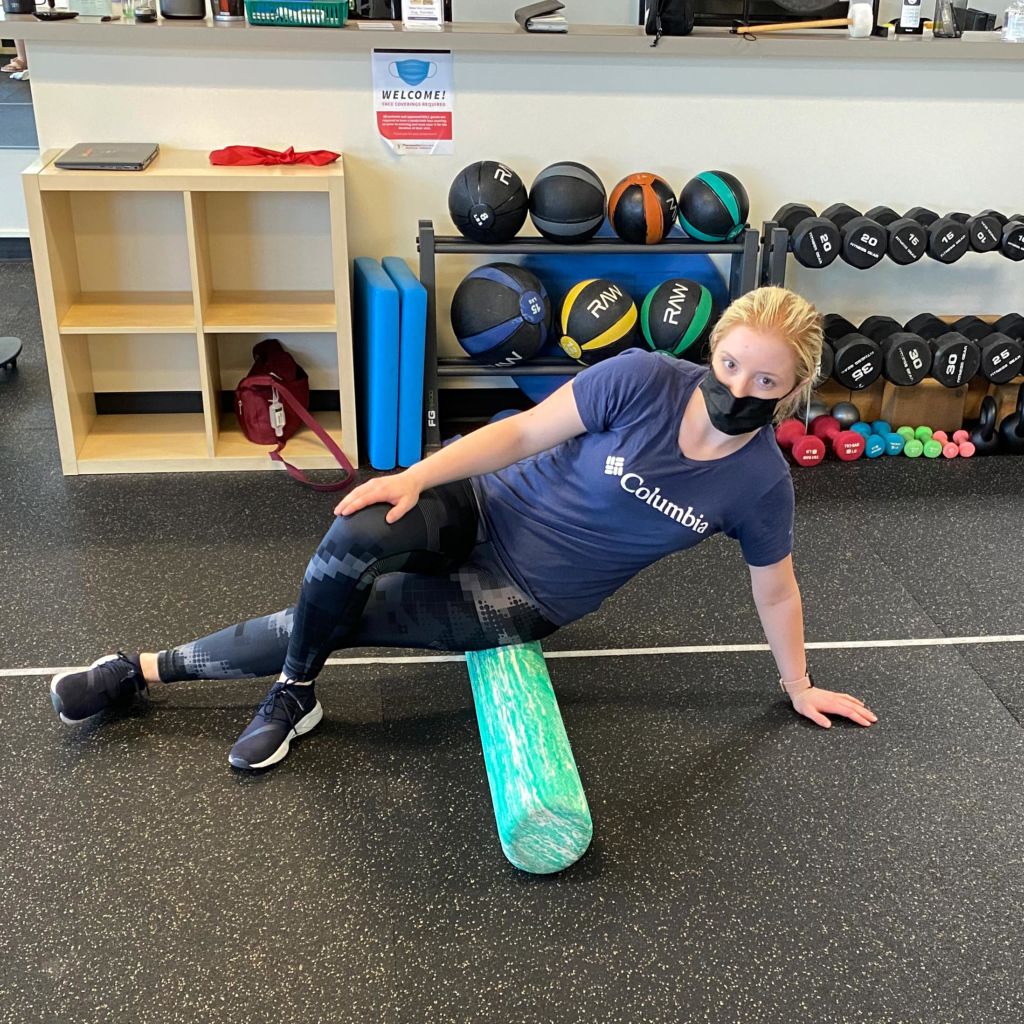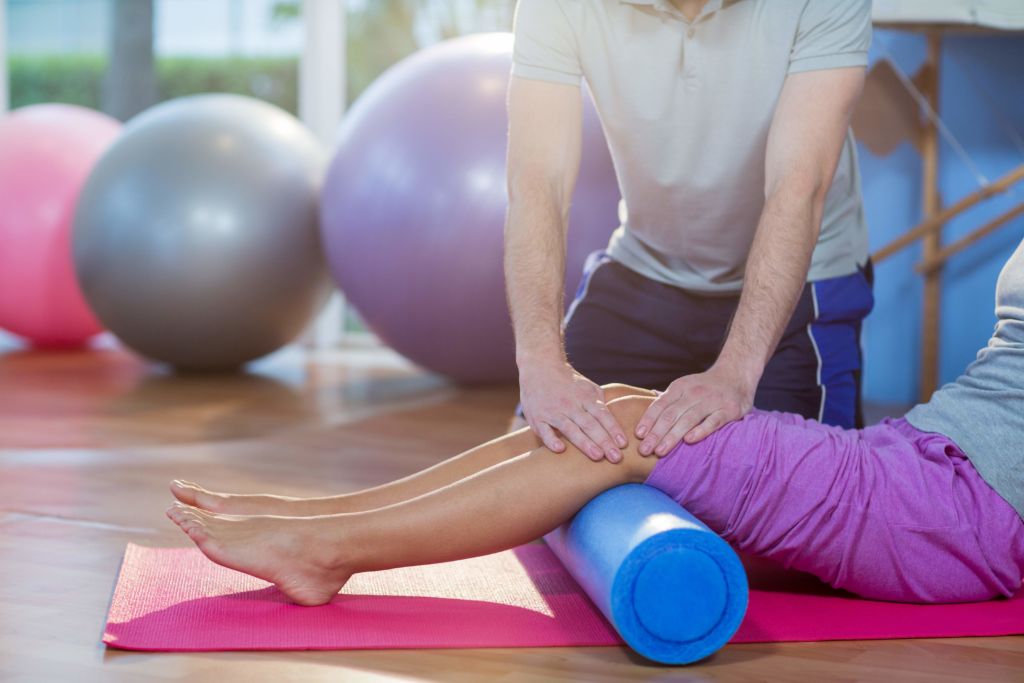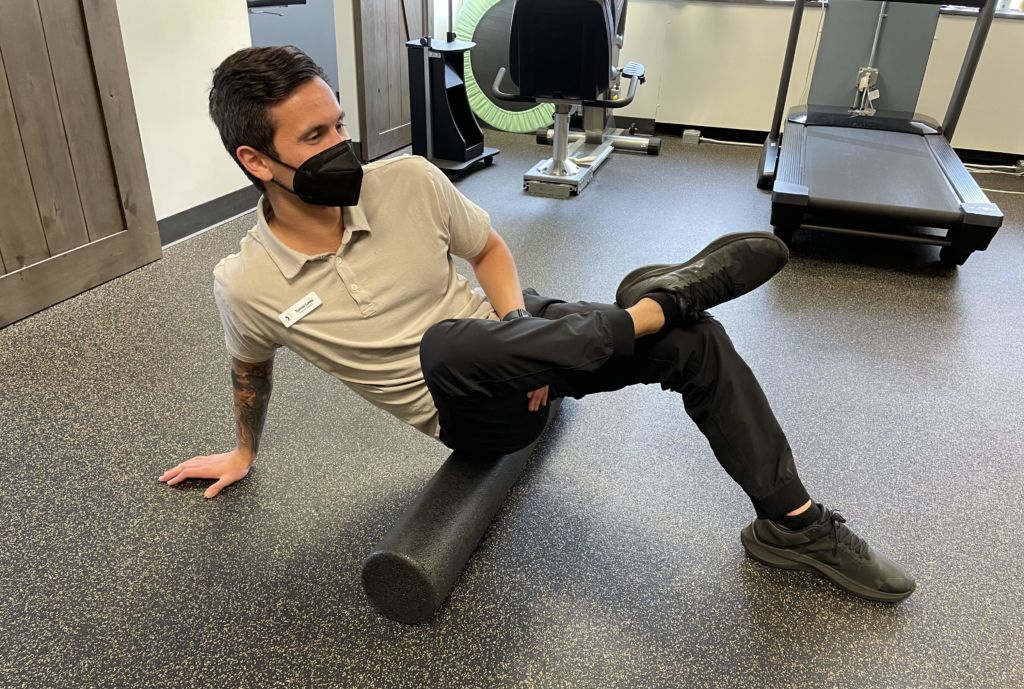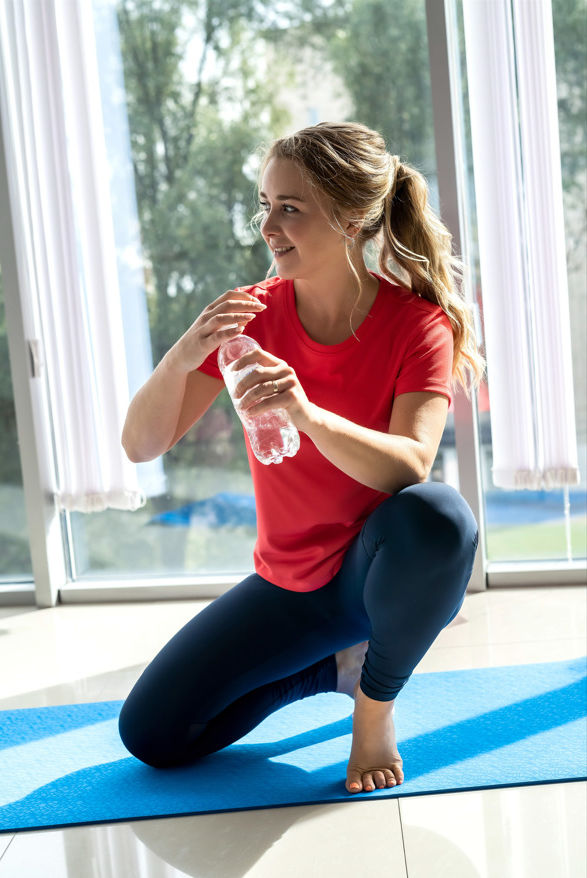What is foam rolling?
You go to any gym, and you see people foam rolling. You see foam rollers advertised online and featured on sale racks in stores. Maybe you even foam roll yourself. But what is foam rolling really doing? Does the science support using foam rolls? And, how does foam rolling help you feel and perform better?
Foam rolling became mainstream before the science to support it could catch up. Even though foam rolling was introduced in the 1980s, it wasn’t until recently that evidence emerged to guide our use of foam rollers. Foam rolling has become very popular today, and for good reason — there are many perceived benefits to it including:

- preparing muscles for workouts and high-intensity exercise
- reducing stiff and tight muscles for increased flexibility and range of motion
- alleviating delayed onset muscle soreness (DOMS)
- increasing athletic performance and speed
Additionally, foam rolling is easy to do at home, is a low-cost option relative to other pain-relieving processes such as massage, acupuncture or bodywork, and in general, and it can provide quick relief of pain when practiced appropriately. For these reasons, foam rolling often appeals to anyone who is either in pain, stiff, or simply wants to perform better.
Our goal then is to make sure that you have all the information you need to decide if foam rolling is for you, and an understanding of some of the best ways to do it.
Is foam rolling beneficial?
Foam rolling is a type of myofascial release which is based on the principles, anatomy and interaction of our muscular and fascial systems. This translates to a basic type of self-massage. Targeting the layers of muscle and fascia with myofascial release, or put simply – massage – improves their pliability, extensibility and readiness for activity. But does foam rolling work? There are several schools of thought on the reasoning behind the effectiveness of foam rolling. They are as follows:
- Mechanical Model: reduced tissue adhesions, reduce tissue stiffness
- Neurological Model: pain reduction effects through modulating pain-perception pathways i.e., our mechanical and pain receptor sensitivity
- Physiological Model: increased blood flow and parasympathetic circulation, inflammatory responses, trigger point breakdown
- Psychophysiological Model: improved perception of well-being, endorphin-induced recovery, decreased arousal level, increased parasympathetic activation, the placebo effect
If you if enjoy the science aspect of this and want to dig deeper – give this meta-analysis article a read and it will provide a nice deep dive into the current research on foam rolling. https://www.ncbi.nlm.nih.gov/pmc/articles/PMC6465761/
A look at the research leads to a few main takeaways about the effectiveness of foam rolling.
- Pre-rolling before exercise had a beneficial effect on sprinting and flexibility, whereas it had little impact on jump height or strength.
- Post-rolling after exercise reduced muscle pain perception and improved the reduction in performance after exercise.
- The effect of foam rolling on pain, flexibility, and performance, was at most a 6 percent change, and was a less than 1 percent change on sprint performance.
- Rolling with a foam roller was more effective than using a handheld roller stick.
The research also acknowledged the high degree of variability in studies, highlighting differences in terms of length of time foam rolling was performed, what type of foam roller or stick was used, the foam rolling exercises chosen, and a range of other variables that likely contribute to inconsistent findings.
Well, there you have it. It is no wonder that there is a lack of scientific evidence and abundant controversy regarding foam rolling given the complexity of factors contributing to the effectiveness or lack thereof.
As physical therapists, we work to extrapolate information from all the latest studies and use clinical judgment based on the results we personally see with our patients. Fortunately, additional studies like the one cited above are starting to provide better support for foam rolling and confirm a lot of the positive effects we see in the PT clinic.

If foam rolling is good for you – why does it hurt so much?
Isn’t that just the case in life sometimes? Don’t we wish that vegetables tasted better, waking up earlier to go for a run was a piece of cake, sleep always came easy and drinking enough water every day was automatic? The same can be said for foam rolling. When we are prescribing foam rolling as part of a physical therapy plan of care in our clinics, our goal is that it feels like a “hurts so good” type of pain. Foam rolling can be experienced along a spectrum from sensitive to downright painful, and this can be for a few reasons.
It is important to note that foam rolling is not always appropriate for everyone, and if you have an acute injury, a muscle/tendon tear, fracture, or other conditions/injuries then foam rolling might not be the right choice for you at this time. It is always best to get guidance from your doctor or physical therapist in these cases.
However, foam rolling can just hurt because the musculofascial system is extremely tight and needs to be addressed. This ties back into the complexity of factors mentioned above and the debate about which model foam rolling is truly acting on.
But when thinking about the BIG PICTURE — if foam rolling is something that makes you feel better, provides benefits you can see and feel, then in some ways, it doesn’t matter WHY, it just matters that it DOES.
When and how to foam roll:
Foam rolling is typically suggested to be performed for 30-60 seconds for 3 sets, and ideally repeated 4-5 days per week coupled with an exercise routine. Speed is key as well — you want to make sure you don’t rush through your foam rolling routine. By rolling at approximately 1 inch per second you will target the myofascial system adequately enough to elicit gains in the tissue and nervous system.
Foam rolling can be performed pre-workout and/or post-workout with different effects depending on the timing. It is also a very good accompaniment to physical therapy and is often prescribed by physical therapists as part of our customized treatment plans.
Our favorite foam roll exercises for back pain relief:
Foam Roll Series
This is a great series we use frequently in our clinic to open up the chest, relieve tension in the shoulders and back, and improve posture and breathing.
Thoracic Extension Over Foam Roll
Thoracic extension is a key part in relieving back pain, especially with many of our patients who spend hours hunched over a desk with less-than-ideal posture.
Thread the Needle
Spinal twists and rotation exercises are another excellent way to address pain and stiffness in the spine. Twisting to both sides can highlight asymmetries as well.
Piriformis Release
The piriformis muscle and our other hip/glute muscles can contribute to back pain as well, and it is always important to address the joints and body parts above and below any location of pain.

Our favorite foam rollers:
Best for individuals new to foam rolling, those with increased sensitivity and pain, lower pain tolerance.
https://www.optp.com/Silver-AXIS-Standard-Density-Foam-Roller
More compact, better for travel, more contoured for better trigger point relief and deeper tissue work but still gentle enough for most users.
https://www.tptherapy.com/foam-rollers/core-foam-roller-gray-18.html
This one definitely kicks things up a notch but is more effective at reaching those deeper, hard to reach areas with increased pressure. If you like a little bit of torture with your foam rolling – this is the one for you.
Newer in the foam rolling world in the past few years, vibrating foam rolls have become more popular and may offer some additional benefit due to increased blood flow and reduced pain.
Uniquely designed to target back pain, can offer relief to tight muscles and joints in the spine.
I hope this helps answer any questions you had regarding foam rolling and addresses some of the controversy surrounding the practice. No doubt the evidence will continue to evolve over the years, and we will update this information if any major breakthroughs occur. If you have tried foam rolling and are still in pain – make an appointment with your local Therapeutic Associates Physical Therapy clinic for a full evaluation. We want to help get you on the road to recovery. Best of luck and get rolling!
We look forward to being a part of your healthcare team.
From injury recovery to movement and performance enhancement, patient success is our passion. Our therapists are committed to the application of evidence-based treatment techniques so if you have any questions about foam rolling, we're here to help. Don't let pain stand in your way of enjoying your favorite activities, schedule your assessment today.


